The Green Man is one of the public houses that have operated in Trumpington in the last 500 years. This page is based on a presentation given by Peter Dawson at the meeting titled Along the High Street, 26 March 2009, with subsequent additions.
The Green Man is an ancient coaching inn of great architectural interest, opposite the Coach & Horses on Trumpington High Street.
The Green Man is thought to be the same pub as The White Lion, with the name changing at an unknown date.
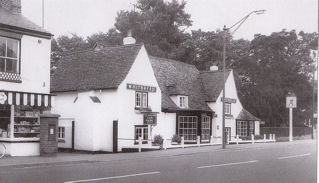
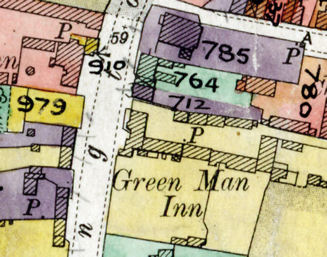
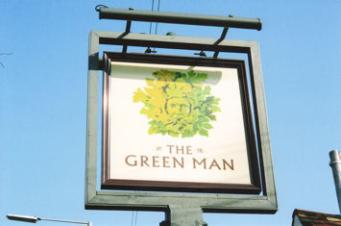
The Green Man was originally a 15th century (late Medieval) timber-framed hall-house, with a ground-floor hall open to the roof and a gabled cross-wing at each end, part refaced with brick. A floor was inserted into the hall during the 16th century and the south wing extended. There were further extensions in later periods, more or less in character with the old building, including the prominent bay windows. It was recorded as an inn by the late 18th century. Most of the Medieval structure was concealed in 1954 when the inn was modernised, but the original king-post roof of the hall and much of the internal timbering remains intact, albeit largely hidden. It is now listed Grade II.
As well as accommodation, the inn provided stabling. Well attended horse shows were held there in the 1850s. Innkeepers included the Bland family from the 1780s to at least the 1850s, with Thomas William Bland being recorded as a brewer and farmer in 1858. In those days, many inns had their own small brewery, beer being widely regarded as a safer drink than the local water. Innkeepers often had a second trade.
In the early 1900s, the Green Man was well-known for its shaded tea garden, complete with tree-house. Polo ponies were stabled at the back and the inn boasted a billiard table. It was also the local parcel depot. Charles Hering was the licensee from 1905 to 1936.
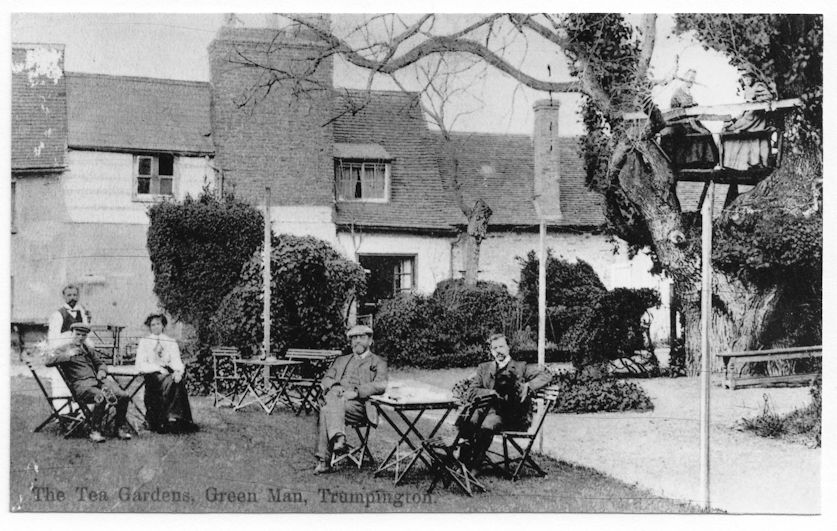
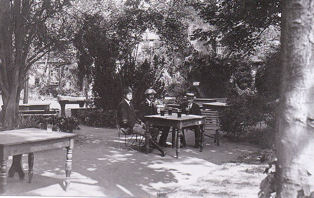
In his notes from the 1920s, Percy Robinson writes “The landlord now is Mr. Charles Hering. On one occasion when referring to the trade being done, and the old sign, he exclaimed, “Ah. It is I who am de green man.” meaning that he had been “taken in” when applying for the house, and that the trade was not as he anticipated it would be. Mr. Hering can be seen in the picture.”
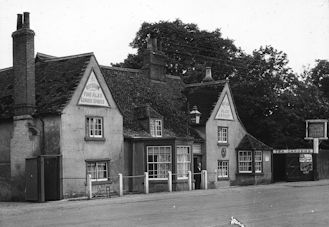
John Corbett Harris was a licensee in the late 1930s. He volunteered for the army in 1940 and was killed in action in the Middle East in 1942.
A celebrity innkeeper in the 1960s was the retired band leader Charles Shadwell, well known to radio listeners for his infectious high-pitched chuckle when conducting the BBC Variety Orchestra. A collection of memorabilia from his musical career was on display in the pub, including a miniature orchestra.
In 1984, a very large but compatible extension was added by Whitbreads on the south side, when the inn became a popular Beefeater Steak House. It transformed in the 1990s into an Out ‘n’ Out restaurant, when the building was given an external make-over with somewhat dubious corporate colours and signage. This was recently improved when the restaurant went up-market. Now, its smart signs declare it once more to be the Green Man, although the colour scheme does the old inn no favours (2009). The Green Man was further renovated and redecorated in 2019.
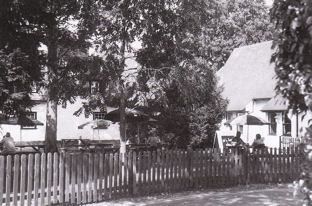
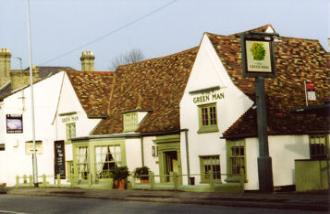
Together with the nearby cottages, the Green Man and the Coach & Horses are markedly lower than the road, which has been raised by many years of resurfacing.
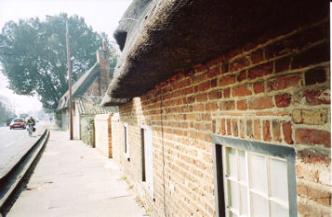
Sources
The Royal Commission on Historical Monuments (1959) describes the Green Man and the Coach & Horses, p. 390-91.
The Victoria County History (VCH) (1982) includes a summary of the different pubs, p. 250-51.
See the bibliography for full details.